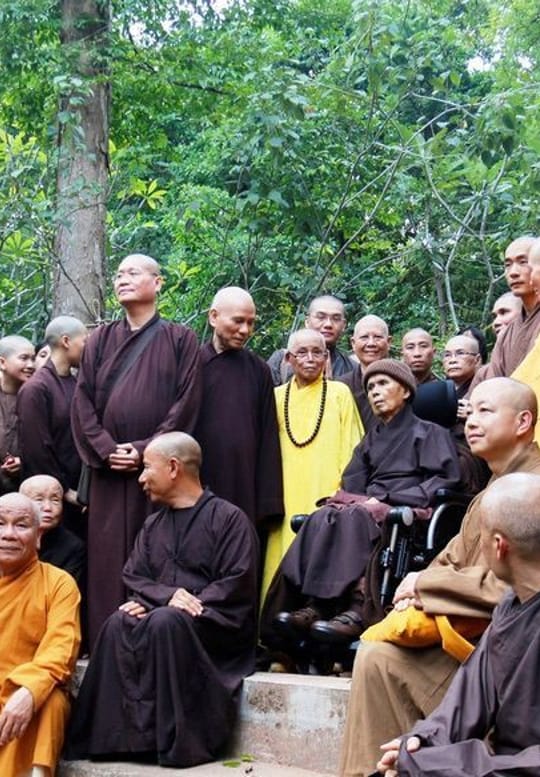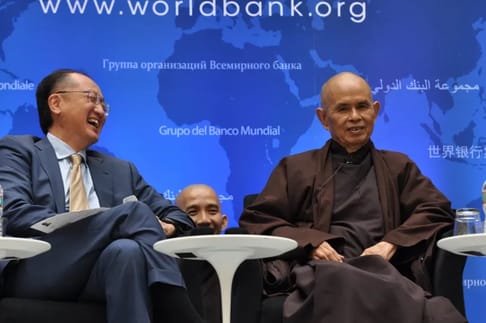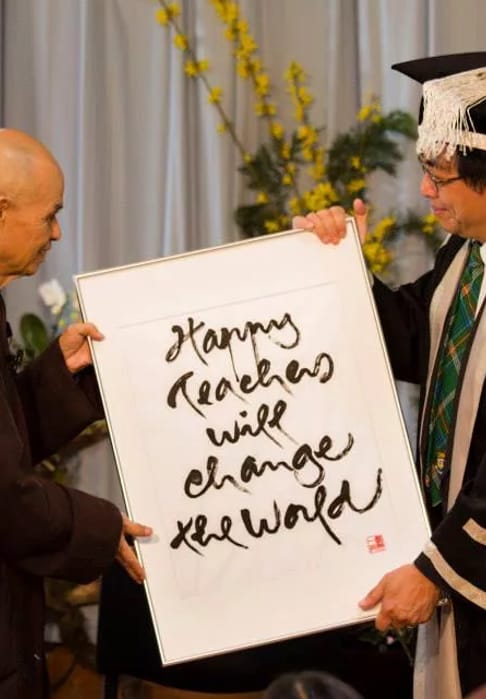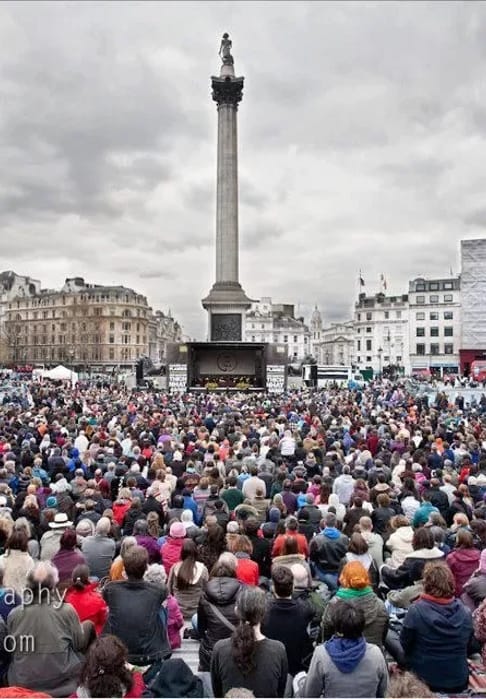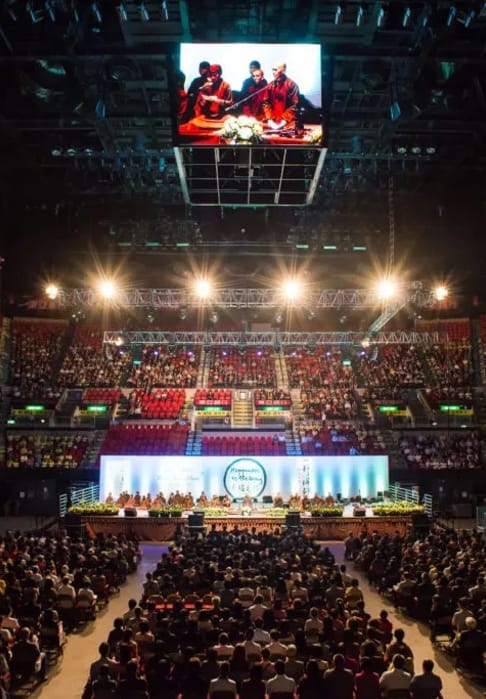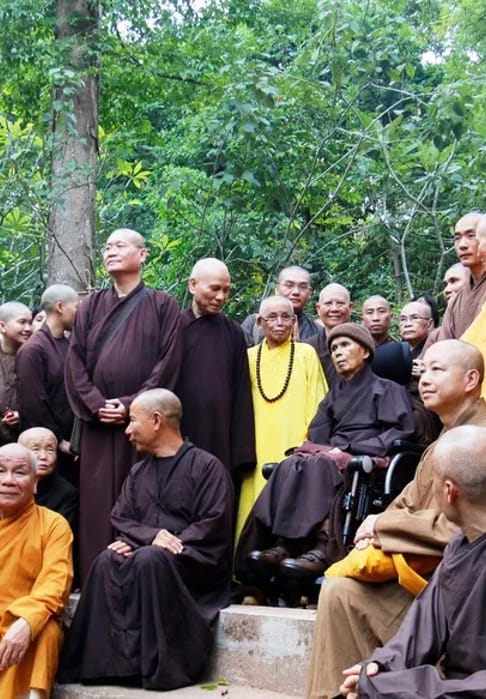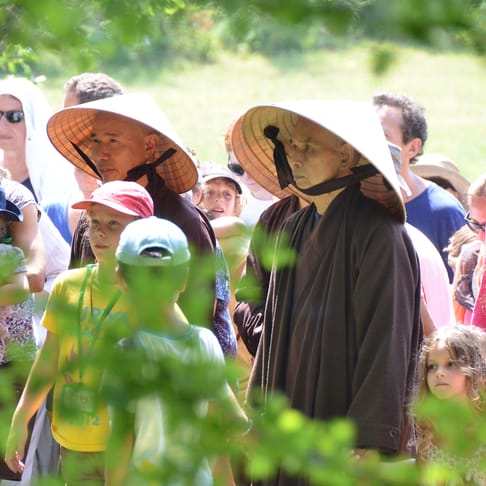The years 2008-9 marked a new wave of expansive growth and activity for Thay and his community. Thay revised the term “Engaged Buddhism” to become “Applied Buddhism.” Just as with applied mathematics or physics, Thay saw the importance of truly applying the Buddhist teachings of mindfulness and interbeing to every aspect of life and society.
Following an invitation to address UNESCO in Paris, Thay expanded and updated his one-page code of ‘global ethics’ (the Five Mindfulness Trainings) to become a truly universal ethical code that can address the roots of social injustice, violence, fear, anxiety, craving, loneliness, and despair. He established the new European Institute of Applied Buddhism in Germany — today the largest Buddhist institute in Europe — offering courses on bringing mindfulness practices into every sector of society.


